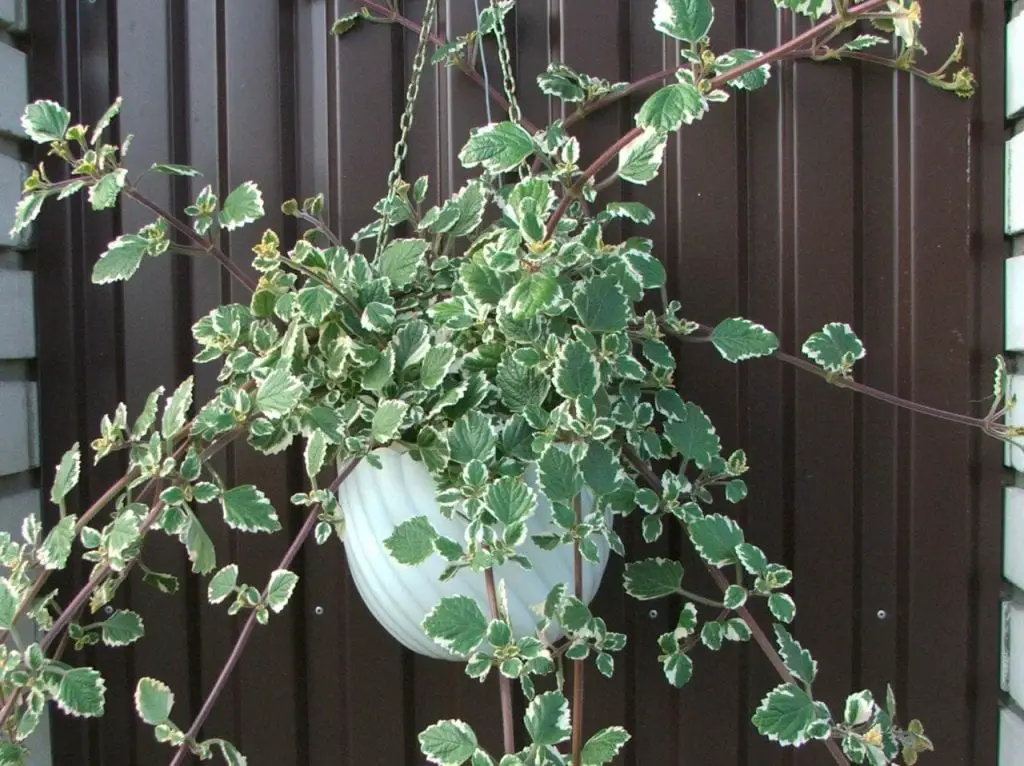
The plant of the incense it is one of the most popular. Its small variegated leaves, as well as the intense aroma they give off, in addition to its easy cultivation and maintenance make it one of the most used to decorate the home.
Would you like to know everything about her? Don’t miss this special. And if you want a plant go ahead and buy it.
Characteristics of the incense plant

Image – Onlineplantguide.com
The incense plant, whose scientific name is Plectranthus coleoides ‘Marginatus’is native to India. It belongs to the botanical family Lamiaceae, such as Salvia or Teucrium. It can reach a height of 50 to 60 centimeters, making it perfect to have in a pot. Its leaves are small, 2-3cm long, green with white edges, slightly jagged.
How is the incense flower?
The flowers grow in clusters, and are pale lilac or white. These have no ornamental value, since they are very small. But if you see that it blooms, you should know that this is usually an unequivocal sign that it is very well cared for.
Its growth rate is rapid, so it can fill a hanging pot in a matter of one to two years. But this should not worry us too much, since its root system is not invasive.
What are the care of the incense plant?

To have a healthy incense plant, we just have to take into account the following:
Location
Being a plant of tropical origin, it does not resist cold, but it does adapts very well to living inside the home as long as we place it in a room where a lot of natural light enters.
Irrigation
Frequent in summer, and somewhat rarer during the rest of the year. We have to prevent the land from getting flooded, so for this we must check the humidity before watering again. Thus, we can use the following:
- Use a moisture meter: introducing it in several different points to know with certainty how wet the earth is.
- Introduce a thin wooden stick (like those used in Japanese restaurants): If it comes out practically clean when it is extracted, it is because the earth is dry and, therefore, it can be watered.
- Weigh the pot: as it does not weigh the same right after watering and after a few days, we can weigh the pot to know when it is time to water.
Important: if we have a plate underneath, we have to remove the excess water 15-20 minutes after having watered, since otherwise the roots would rot.
substrate for the Plectranthus coleoides ‘Marginatus’

It must have good drainage. We can use universal growing medium mixed with 30% perliteand put a first layer of expanded clay balls so that the water drains more quickly.
Subscriber
Throughout the growing season, that is, in spring and summer, we must fertilize using organic fertilizerslike guano for example, which has a rapid effectiveness. Of course, even if it is organic, we have to follow the instructions specified on the packaging. Thus, the care that we provide to the incense will be the most appropriate.

Related article:
What types of organic fertilizers are there?
Pruning
To avoid the possible appearance of pests, fungi or bacteria, we must remove the leaves and withered flowers. Also, in spring we have to lower the height, more or less in half. In this way, we will force it to take out new, healthier and stronger shoots.
Multiplication
The fastest way to get new copies is multiplying it by cuttingsin spring. We cut some stems, plant them in a pot with equal parts peat and sand substrate, and water.
If all goes well, they will root soon, in about two weeks.
Problems that incense can have

Image – Todohuertoyjardin.es
Although it is a very resistant plant, it can be affected by some pests or have some problems, which are:
Pests
If we have it abroad, we must be very careful with snails and slugs. Mollusks love the young leaves of plants, including those of incense, so we have to keep an eye on them and act when they start to cause harm.
Diseases
If we water excessively, fungi may appear, such as mildew (known as gray mold, because of the ‘dust’ it leaves on the leaves) or Phytophthora. In the event that it occurs, we must act quickly, treating the plant with systemic fungicides.
However, the best cure is prevention, either with copper or sulfur. But if we have pets we have to keep them away from these products, as they can cause serious health problems. In addition, we have to avoid overwatering.

Related article:
What are the fungi that affect plants?
Problems
- Lack of water: when the leaves turn yellow and fall, we have to increase the frequency of watering.
- Excess of water: When the stems and leaves rot, we have to cut the affected parts, remove the plant from the pot and wrap the root ball with absorbent paper overnight. The next day, we will plant it in the pot and treat it with fungicide.
Incense plant curiosities

Incense is a plant that we knew in Spain thanks to the Arab merchants of the Taifa era. Very soon we began to consider it a symbol of good omenprobably because of its pleasant aroma.
But what we like so much, others cannot bear it, like mosquitoes, which move away as soon as they get close to it. For this reason, it is an excellent anti-mosquito plant.
From this link you can buy incense plants. Do not miss it!!
And with this we end. What do you think?

